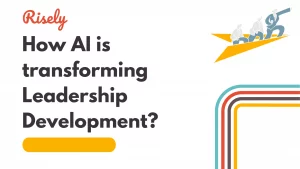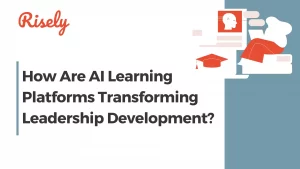In the fast-paced world of business and innovation, knowledge is a priceless asset that holds the key to growth, efficiency, and success. But how do organizations ensure that the wealth of insights, experiences, and expertise within their teams isn’t lost in the shuffle? This is where the concept of knowledge capture steps in. In this blog, we’ll discuss knowledge capture – what it is, why it matters, and how organizations can harness it to unlock their full potential.
What is Knowledge Capture?
Knowledge capture refers to collecting, documenting, and storing valuable information, insights, experiences, and expertise within an organization. It involves capturing tacit knowledge (personal insights and experiences) and explicit knowledge (documented information) to make it accessible for future reference, learning, and decision-making. Knowledge capture is essential because it ensures that valuable knowledge and expertise are not lost when employees leave the organization or projects are completed. It enables the organization to create a repository of information that can be used to solve problems, make informed decisions, and support continuous improvement.Why is Knowledge Capture Necessary?
Knowledge-capture is essential for several reasons:- Preserving institutional memory: Knowledge capture ensures that employees’ collective wisdom, insights, and experiences are preserved even when individuals leave the organization. This prevents the loss of valuable knowledge and expertise.
- Supporting decision-making: Captured knowledge provides a foundation for informed decision-making. Employees can use past experiences, case studies, and best practices to make well-informed choices.
- Accelerating learning: New employees can benefit from the knowledge captured by quickly accessing information, avoiding redundant efforts, and getting up to speed more efficiently.
- Promoting innovation: By capturing lessons learned from successes and failures, organizations can foster a culture of innovation. Employees can build upon past experiences to create new solutions.
- Enabling continuous improvement: Knowledge-capture allows organizations to identify areas for improvement based on historical data and feedback. This drives continuous enhancement of processes and practices.
- Enhancing collaboration: When knowledge is captured and shared, it breaks down silos and encourages cross-functional collaboration. Teams can learn from each other and work together more effectively.
- Mitigating risks: Capturing knowledge about past mistakes, challenges, and risks can help prevent their recurrence in the future. Organizations can take proactive measures to avoid similar pitfalls.
- Facilitating training and development: Knowledge-capture supports the creation of training materials, manuals, and resources for employee development, ensuring consistent learning experiences.
What is the Difference Between Knowledge Capture and Knowledge Transfer?
Knowledge-capture and transfer are essential components of effective knowledge management, but they refer to distinct stages in leveraging organizational knowledge. Here’s the difference between the two: Knowledge capture: Knowledge-capture refers to collecting, documenting, and storing valuable information, insights, experiences, and expertise within an organization. It involves systematically gathering tacit knowledge (personal insights and experiences) and explicit knowledge (documented information) and organizing it in a structured manner for future reference and utilization. Knowledge transfer: Knowledge transfer, on the other hand, is the act of moving knowledge from one source to another. It involves intentionally disseminating knowledge and expertise from individuals, teams, or departments that possess it to those who need it. Knowledge transfer focuses on effectively conveying insights, skills, and experiences to others, enabling them to benefit from the captured knowledge. It’s about making knowledge available, understandable, and actionable by the intended recipients. In essence, knowledge-capture is about collecting and preserving knowledge, while knowledge transfer is about actively sharing and imparting that knowledge to others.Methods of Knowledge Capture
Knowledge capture methods encompass various techniques and tools to collect, document, and organize knowledge. These methods ensure valuable insights and expertise are effectively captured and accessible for future reference and decision-making. Some common knowledge-capture methods include:- Documentation and manuals: Creating written documents, manuals, and guides that outline processes, procedures, best practices, and lessons learned.
- Lessons learned sessions: Facilitating sessions where team members share their experiences, successes, and challenges, capturing valuable insights for future projects.
- Interviews and surveys: Conducting interviews or surveys with subject matter experts to gather insights and perspectives on specific topics.
- Mentoring and coaching: Encouraging experienced employees to mentor or coach junior colleagues, facilitating the transfer of tacit knowledge.
- Storytelling workshops: Hosting workshops where employees share stories and anecdotes that contain valuable lessons and experiences.
- Knowledge repositories: Creating digital repositories or databases to store documents, articles, videos, and other knowledge assets.
- After-action reviews: Evaluating completed projects or initiatives to capture what went well, what could be improved, and lessons learned.
- Communities of practice: Establishing forums or groups where employees with similar interests share knowledge, experiences, and best practices.
- Collaborative platforms: Utilizing collaborative software and tools allows team members to share real-time information, updates, and insights.
- Shadowing and observation: Allowing employees to observe others in their roles to learn by seeing real-world tasks and challenges.
Other Interesting Reads
Process of Knowledge Capture
Knowledge capture involves systematically collecting, documenting, and organizing valuable information and expertise within an organization. A step-by-step guide to the knowledge-capture process:- Identify knowledge sources: Determine the individuals, teams, and departments with valuable knowledge and expertise relevant to the organization’s goals.
- Define knowledge goals: Clarify what specific types of knowledge need to be captured, such as best practices, lessons learned, customer insights, or technical expertise.
- Select knowledge capture methods: Choose appropriate methods for capturing knowledge, such as documentation, interviews, surveys, workshops, or collaborative platforms.
- Plan and prepare: Develop a plan outlining the scope, objectives, timeline, and resources needed for the knowledge capture initiative.
- Document knowledge: Organize and document captured knowledge in various formats, including written documents, videos, audio recordings, or visual representations.
- Categorize and tag: Classify the captured knowledge into relevant categories and use tags or keywords to facilitate easy retrieval and search.
- Validate and review: Validate the accuracy and relevance of the captured knowledge through reviews, peer feedback, or subject matter expert input.
- Organize and store: Store the documented knowledge in a structured manner, whether in a digital repository, knowledge management system, or collaborative platform.
- Regular updates: Continuously update and refresh the captured knowledge to ensure it remains current and relevant.
- Monitor usage and impact: Track how often the captured knowledge is accessed and utilized and how it improves decision-making and problem-solving.
Strategies for Knowledge Capture
Implementing knowledge capture strategies effectively is crucial for organizations to harness their valuable insights and expertise. Some strategies to ensure successful implementation:- Identify critical knowledge areas: Pinpoint areas where capturing knowledge is most crucial, such as critical processes, customer insights, or technical expertise.
- Define clear objectives: Set specific goals for knowledge-capture, improving decision-making, accelerating innovation, or enhancing customer service.
- Choose appropriate methods: Select methods that align with your organization’s culture, such as mentoring, documentation, or communities of practice.
- Allocate resources: Dedicate time, personnel, and technology to support knowledge-capture initiatives effectively.
- Engage leadership support: Secure buy-in from senior management to emphasize the importance of knowledge capture across the organization.
- Train and educate: Train employees to capture and contribute knowledge, ensuring they understand the process and benefits.
- Integrate with workflows: Embed knowledge-capture into everyday workflows to make it seamless and a natural part of employees’ tasks.
- Utilize technology: Employ knowledge management systems, collaboration tools, and digital repositories to facilitate easy storage and retrieval.
- Encourage collaboration: Foster a collaborative culture where employees feel comfortable sharing insights and learning from one another.
- Monitor and evaluate: Continuously assess the impact of knowledge capture on performance, making adjustments as needed.
Conclusion
In a rapidly evolving landscape, the power of knowledge capture cannot be overstated. As we conclude this blog, it’s clear that organizations that invest in systematic knowledge capture strategies are better equipped to thrive. By preserving insights, experiences, and expertise, they build a reservoir of wisdom that informs decisions, fosters innovation, and propels growth. Embracing knowledge capture isn’t just a practice – it’s a commitment to the continuous evolution and excellence of the organization.Ready to take your organization’s knowledge management to the next level?
Take our free strategic thinking assessment and discover how harnessing knowledge capture can supercharge your team’s innovation and growth.






